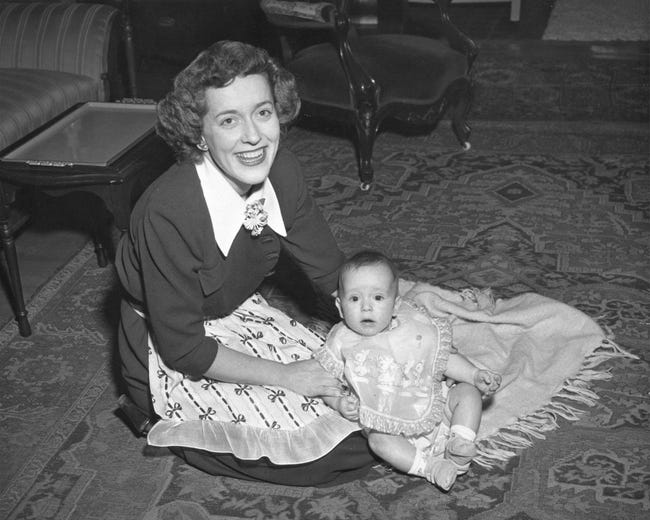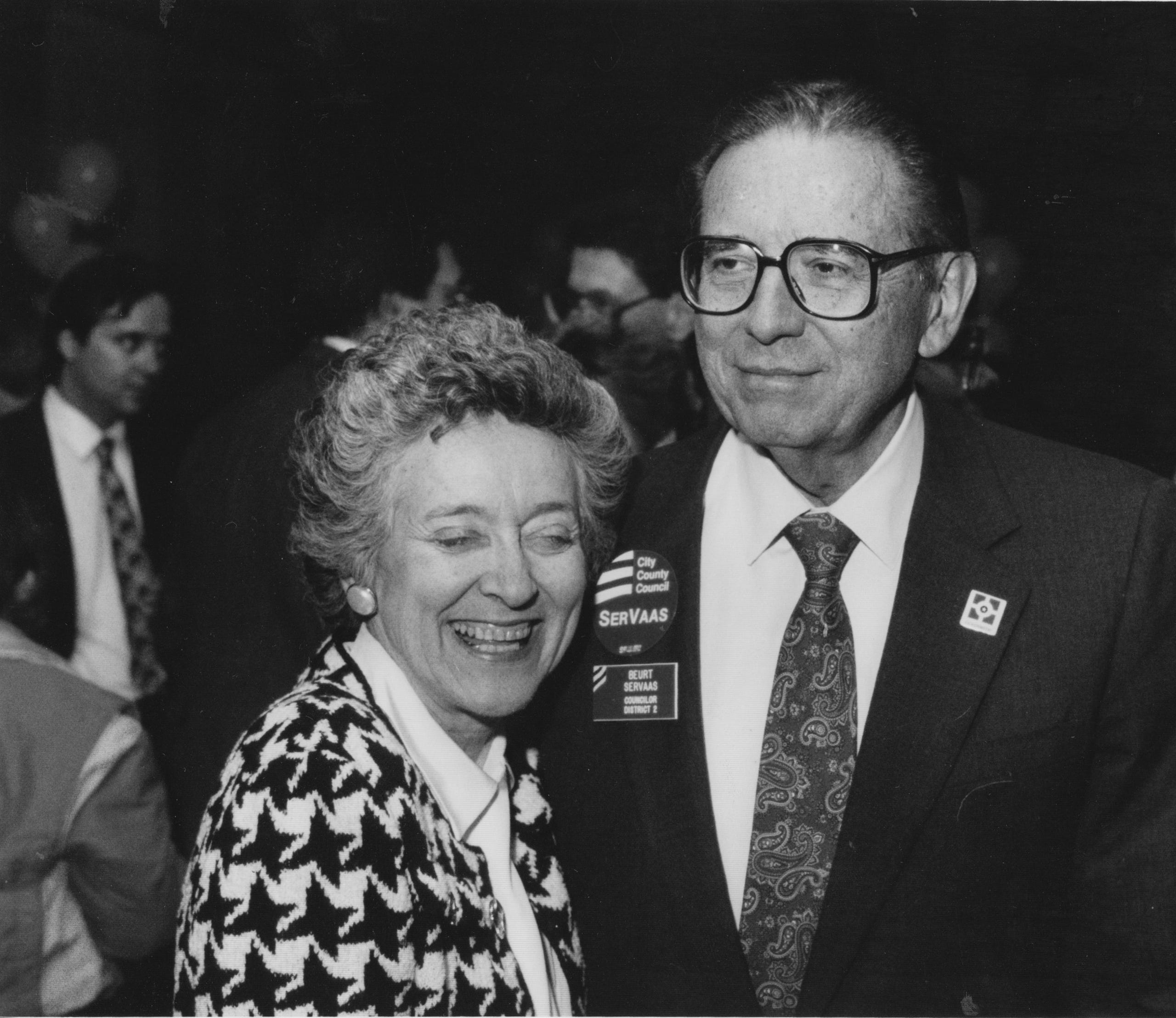
Photo info ...
Credit: IndyStarView Source
(May 7, 1918-February 2, 2014) Beurt SerVaas was an Indianapolis native known for the integral role he played between the 1960s and 2000s in reshaping the city.
A 1937 graduate of , SerVaas earned his way through Indiana University’s extension program in Indianapolis by working as a janitor. He graduated in May 1941 with a degree in chemistry, history, and Spanish and went on to teach at Shortridge. During this time, he also worked towards obtaining a post-graduate degree—this time at Purdue University for chemistry. SerVaas would later be awarded a doctorate in Medical Science from Indiana University in 1970.
During World War, SerVaas served as a naval officer for the Office of Strategic Services (a precursor to the CIA) in China. He earned the Bronze Star for heroic efforts in helping to liberate present-day Taiwan from Japanese occupation. SerVaas would later receive another award for these efforts, the Chiang Kai-shek Medal of Honor.

After the war, SerVaas met Cory Synhorst (see ) in New York City in 1948 when she stopped him to ask for help in completing a patent application for something she created while working as a seamstress. Within two years Cory had her patent and the pair were married. They made Indianapolis their home and had five children—Eric, Joan, Paul, Kristin, and Amy.
It was around the end of the 1940s that SerVaas began building his business career. He traveled all over the world, making connections with local and international businesses and leaders. SerVaas’ business model consisted primarily of buying and consolidating struggling businesses. Over the span of his life, SerVaas bought about 50 businesses ranging from rubber refiners to the manufacturers of the cleaning product, Bar Keeper’s Friend, to the publishers of the .

By the 1960s, SerVaas had stepped into the political ring after being elected to the Indianapolis City Council. As one of the founding members of the Republican Action Committee, SerVaas was crucial in helping rebuild the during the mid-1960s. When many Marion County government services merged with those provided by the city following the 1969 legislation, SerVaas emerged as a powerful figure on the combined . He served as president from 1975 until his retirement in 2002.
In addition to helping rebuild the Republican Party in Marion County, SerVaas controlled the City-County Council when a string of Republican mayors (, , and ) led the city. The reliably large Republican majorities on the council helped to ensure that mayoral initiatives would find support. This also provided SerVaas with tremendous clout with the mayors themselves and the citizens of Indianapolis more generally. During his last years as council president, SerVaas served alongside Democratic mayor , although the council remained in Republican control.

Between his political ranking and his own extensive education, SerVaas was uniquely positioned to support higher education throughout the state. He served as a member of the Marion County Council, where he had helped ensure that land would be zoned for a “university quarter.” This would help enable Indiana University and Purdue University to consolidate their offerings, beginning in 1969, as part of the amalgamation known as . Like other Republican leaders of the time, namely Richard Lugar, SerVaas had advocated for a separate, independent state university on the spot.
SerVaas also served as chairman of the Governor’s Indiana State Commission on Medical Education and as chairman of the State Commission for Higher Education.
SerVaas was revered and respected for his financial and political acumen. He was widely hailed as a highly significant leader in the city’s recent history. Never one to shy from attention, SerVaas took pride in his many civic and philanthropic achievements.

Help improve this entry
Contribute information, offer corrections, suggest images.
You can also recommend new entries related to this topic.